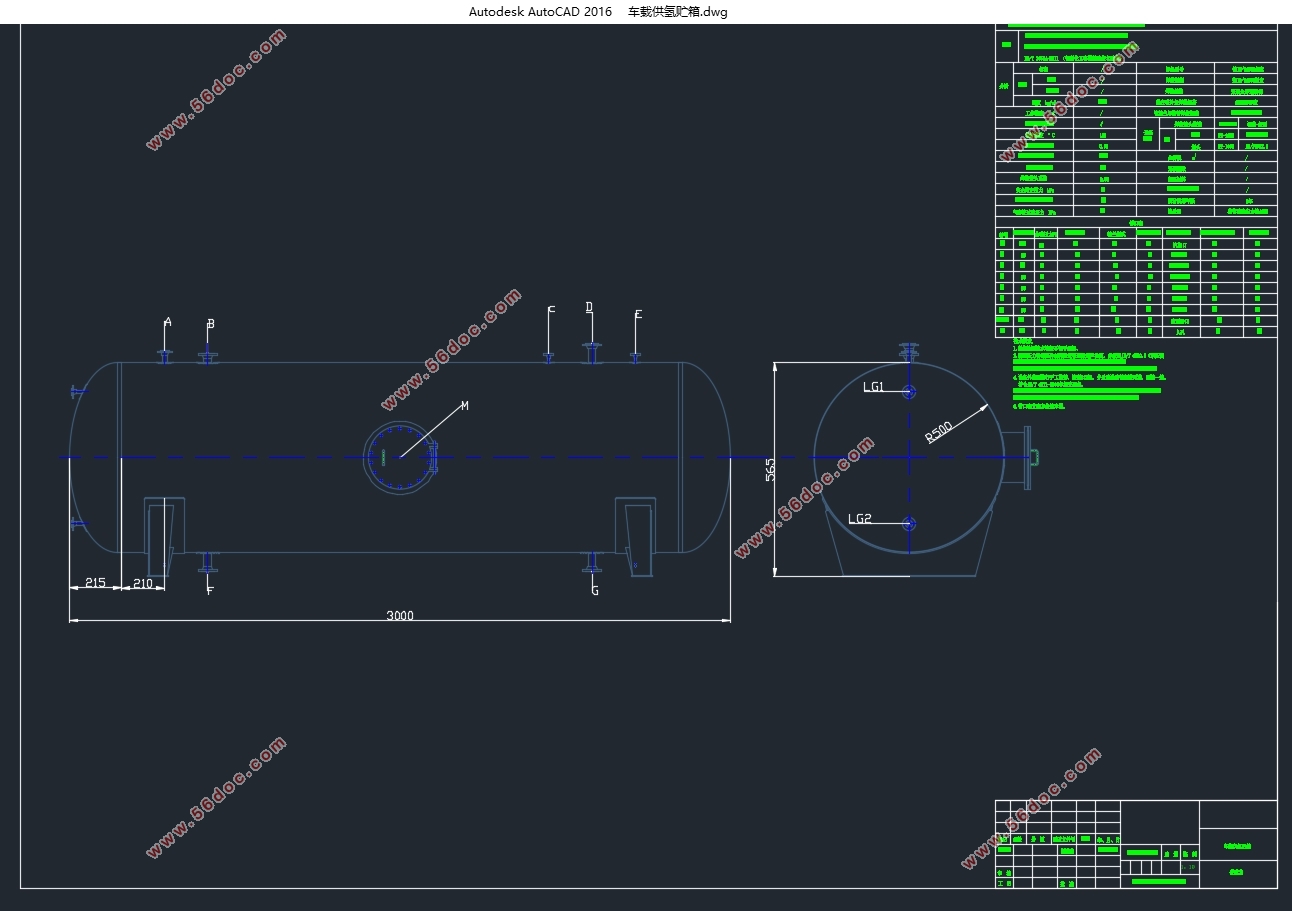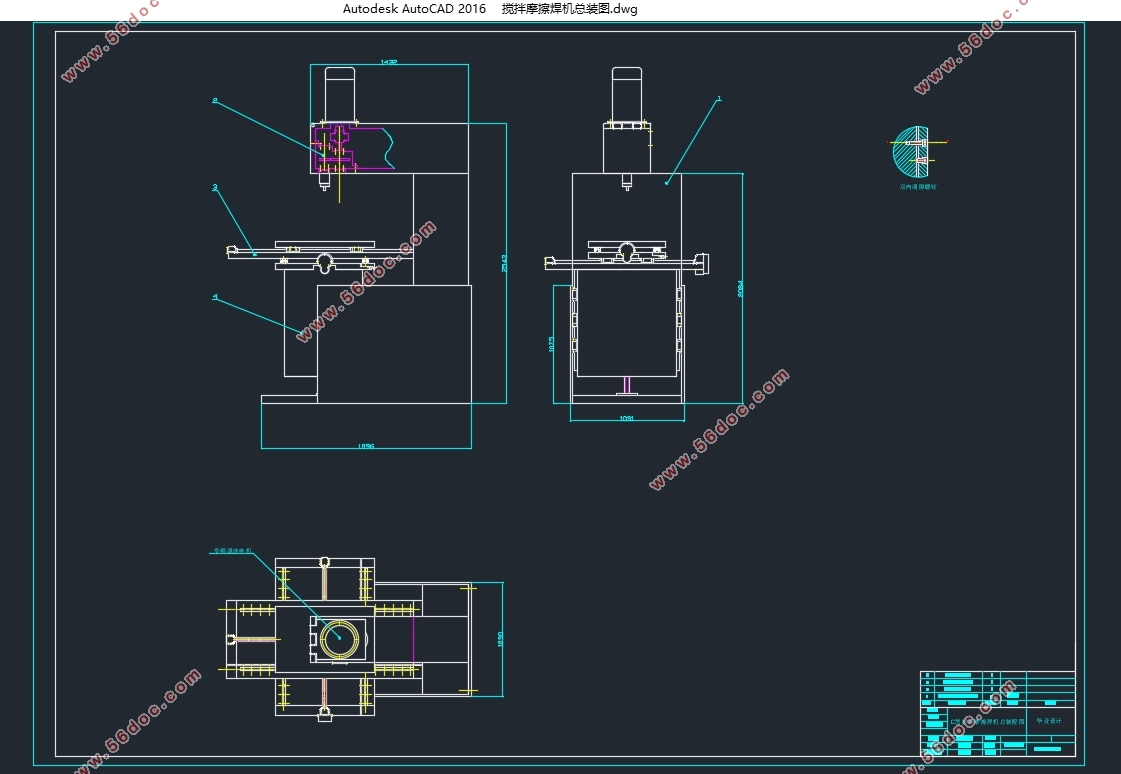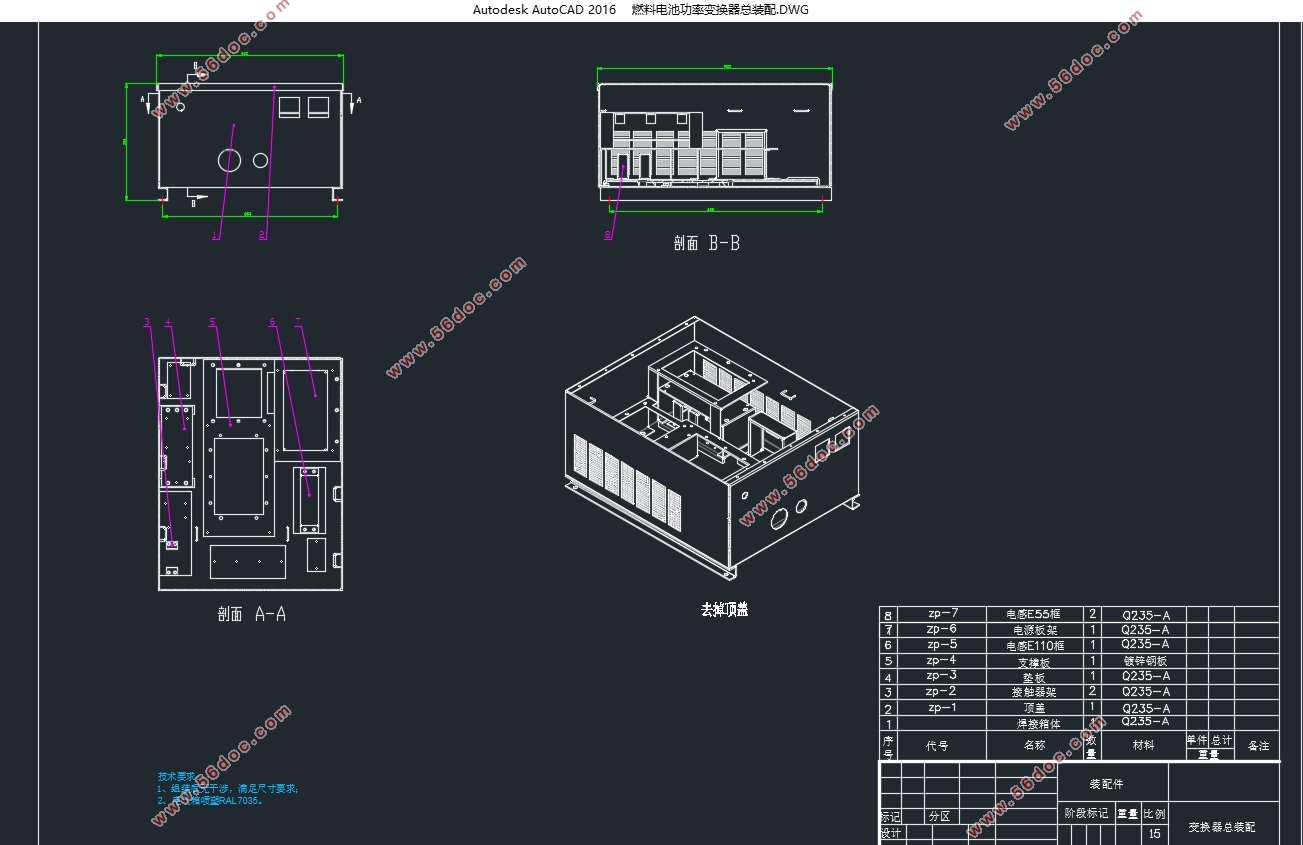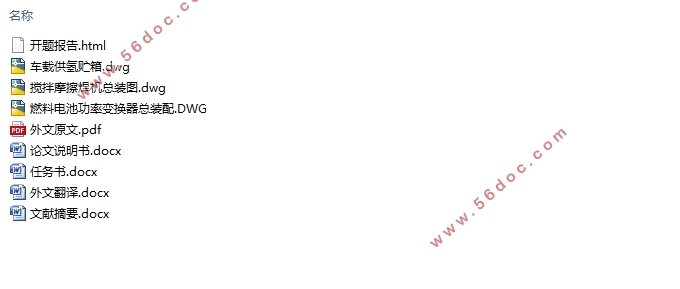氢燃料电池车载供氢贮箱轻量化设计制造(含CAD装配图)(任务书,开题报告,文献摘要,外文翻译,论文说明书30000字,CAD图3张)
摘要
近年来,随着环境污染和能源短缺问题的加剧,新能源和轻量化技术成为了汽车工业的发展趋势。氢燃料电池是新能源汽车一种理想的动力来源,而铝合金作为一种低密度、高比强度的材料,能够同时满足氢能储存和轻量化的技术需求。当前,铝合金内胆纤维缠绕瓶被广泛应用于车载储氢系统中,该内胆由铝合金板材冲压成型,通过焊接完成密封。然而铝合金属于难焊材料,传统焊接方法容易产生焊接缺陷,无法满足使用要求。搅拌摩擦焊(Friction Stir Welding, FSW)作为一种固态连接方式能够有效地连接铝合金材料,满足构件的强度要求。因此,有必要开展铝合金FSW接头的焊接工艺、组织性能、低温性能以及成形的研究。
通过试验研究了2024-O铝合金FSW接头低温(-75℃)力学性能,得到结果如下:常温拉伸抗拉强度287MPa,屈服强度211MPa,延伸率11%;低温拉伸抗拉强度291MPa,屈服强度229MPa,延伸率11.5%。低温条件下的强度、延伸率略微增强,低温“增强增韧”效果不明显。
使用CAE软件AutoForm对2024-O铝合金FSW板材进行了成形分析,得到:做储氢罐两端(外形为半球)的模拟时,板料的选择上,圆形板料相比方形板料具有更好的成形效果以及更高的材料利用率η。
关键词:储氢密度,2024铝合金,低温处理,FSW
Abstract
In recent years, with the aggravation of environmental pollution and energy shortage, new energy and lightweight technology have become the development trend of automobile industry. Hydrogen fuel cell is an ideal power source for new energy vehicles. Aluminum alloy, as a low density and high specific strength material, can meet the technical requirements of hydrogen storage and lightweight at the same time. Nowadays, the filament wound bottle of aluminium alloy inner liner is widely used in vehicle hydrogen storage system. The inner liner is stamped by aluminium alloy sheet and sealed by welding. However, aluminium alloys are difficult to weld. Traditional welding methods are easy to produce welding defects, which can not meet the requirements of use. Friction Stir Welding (FSW), as a solid-state bonding method, can effectively connect aluminum alloy materials to meet the strength requirements of components. Therefore, it is necessary to study the welding process, microstructure and properties, low temperature properties and forming of FSW joints of aluminium alloys.
The mechanical properties of 2024-O aluminium alloy FSW joints at low temperature (-75 C) were studied by experiments. The results show that the tensile strength at room temperature is 287 MPa, the yield strength is 211 MPa, and the elongation is 11%. The tensile strength at low temperature is 291 MPa, the yield strength is 229 MPa and the elongation is 11.5%. Strength and elongation were slightly increased at low temperature, but the effect of "strengthening and toughening" at low temperature was not obvious.
The forming analysis of 2024-O aluminium alloy FSW sheet was carried out by using CAE software AutoForm. The results show that when the two ends of hydrogen storage tank (hemisphere shape) are simulated, the circular sheet has better forming effect and higher material utilization ratio than the square sheet.
Key words: hydrogen storage density, 2024 aluminum alloy, low temperature treatment, FSW




目录
摘要 I
Abstract II
第1章绪论 1
1.1选题背景及研究意义 1
1.1.1 选题背景 1
1.1.2 研究意义 2
1.2 车载储氢技术研究进展 3
1.2.1 储氢技术概述 4
1.2.2 高压气体储氢 5
1.2.3 低温液态储氢 7
1.2.4 金属氢化物储氢 9
1.3 铝合金搅拌摩擦焊概述 10
1.3.1 搅拌摩擦焊原理 11
1.3.2 搅拌摩擦焊技术特点 12
1.3.3 铝合金及其热处理 13
1.4 研究内容与技术路线 14
1.2.2 高压气体储氢 14
1.4.1 研究内容 17
1.4.2 技术路线 17
第2章材料制备与试验方法 18
2.1 焊接条件 18
2.1.1 试验材料 18
2.1.2 焊接设备 19
2.1.3 焊前准备与焊后处理 21
2.2 低温处理工艺 21
2.2.1 试验样品的准备 21
2.2.2 低温处理工艺参数 22
2.2.3 微拉伸试验设备 22
2.3 力学性能测试 25
2.3.1 拉伸性能测试 25
2.3.2 显微硬度测试 26
2.3.3 金相组织观察分析 26
2.4 本章小结 26
第3章 2024铝合金FSW接头组织性能与低温性能 28
3.1 焊接工艺参数对FSW接头微观组织的影响 28
3.2 焊接参数对FSW接头力学性能的影响 32
3.2.1 2024铝合金FSW接头显微硬度分布 32
3.2.2 FSW拼焊接头拉伸性能 33
3.3 低温处理技术 34
3.3.1 低温处理概况 34
3.3.2 低温处理发展历程 35
3.3.3 FSW接头低温力学性能 35
第4章基于AutoForm的储氢罐成型分析 37
4.1 薄板冲压国家标准与成型工艺 37
4.1.1 相关薄板冲压国家标准 37
4.1.2 冲压工艺类型 37
4.1.3 冲压工艺特点与运用 38
4.2 相关软件简介 39
4.2.1 基于AutoForm的产品开发 39
4.2.2 Model功能模块 41
4.3 基于AutoForm的储氢罐成形分析 42
4.3.1 主要冲裁工艺参数 42
4.3.2 储氢罐成形分析 44
4.4 本章小结 45
第5章总结与展望 47
5.1 研究总结 47
5.2 研究展望 47
参考文献 48
致谢 51
|









